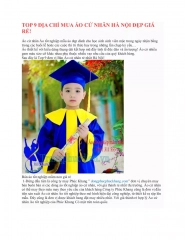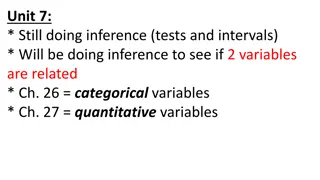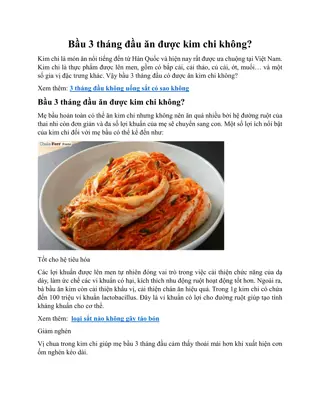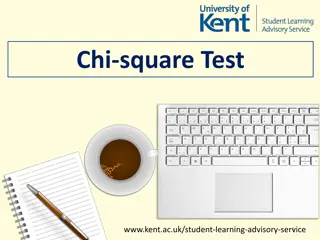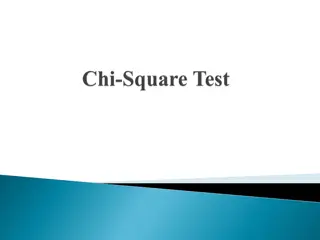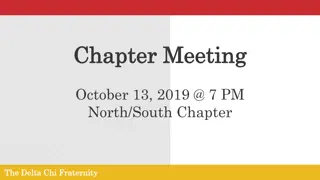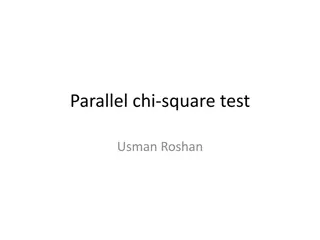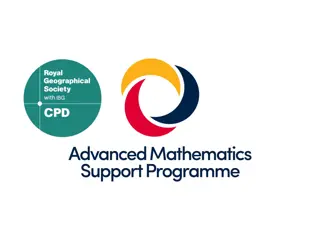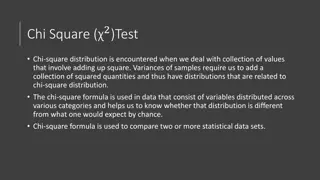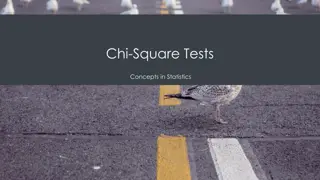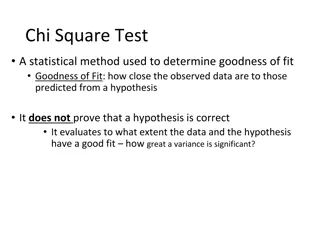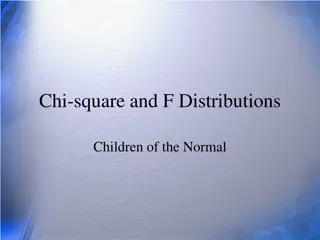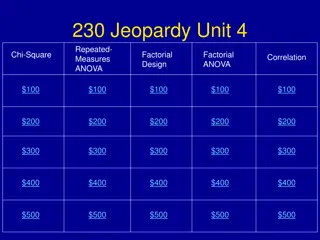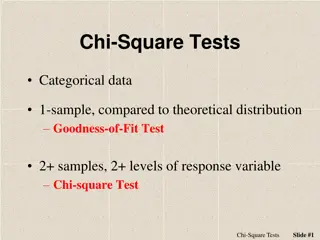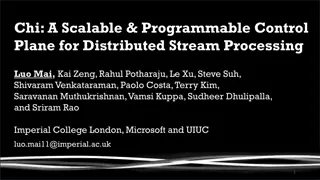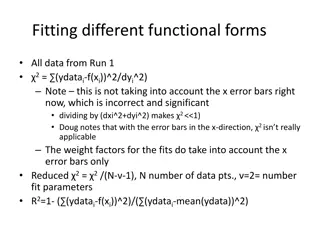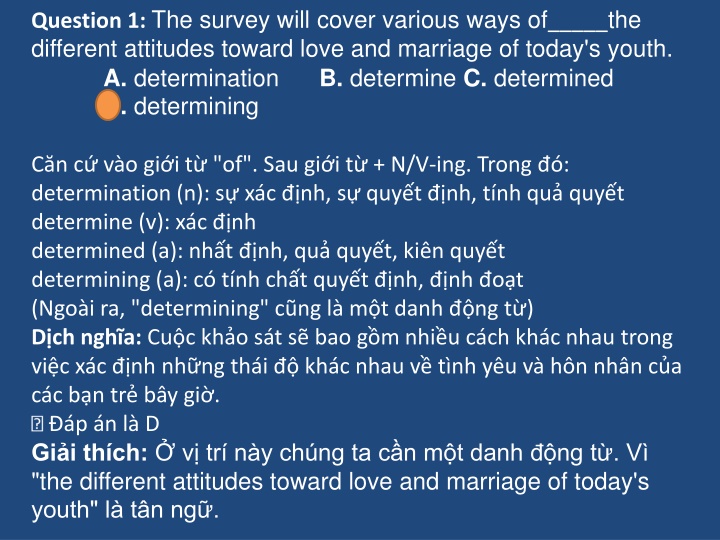
Survey on Attitudes Towards Love and Marriage Among Today's Youth
This survey explores various ways of determining the different attitudes towards love and marriage of today's youth. It delves into the complexities and variations in perceptions among young individuals regarding these important aspects of life.
Download Presentation

Please find below an Image/Link to download the presentation.
The content on the website is provided AS IS for your information and personal use only. It may not be sold, licensed, or shared on other websites without obtaining consent from the author. If you encounter any issues during the download, it is possible that the publisher has removed the file from their server.
You are allowed to download the files provided on this website for personal or commercial use, subject to the condition that they are used lawfully. All files are the property of their respective owners.
The content on the website is provided AS IS for your information and personal use only. It may not be sold, licensed, or shared on other websites without obtaining consent from the author.
E N D
Presentation Transcript
Question 1: The survey will cover various ways of_____the different attitudes toward love and marriage of today's youth. A. determination B. determine C. determined D. determining C nc v o gi it "of". Sau gi it + N/V-ing. Trong : determination (n): s x c nh, s quy t nh, t nh qu quy t determine (v): x c nh determined (a): nh t nh, qu quy t, ki n quy t determining (a): c t nh ch tquy t nh, nh o t (Ngo i ra, "determining" c ng l m t danh ngt ) D chngh a: Cu ckh o s t s bao g mnhi u c ch kh c nhau trong vi c x c nhnh ng th i kh c nhau v t nh y u v h n nh n c a c c b ntr b y gi . p n l D Gi i th ch: v tr n y ch ng ta c n m t danh ng t . V "the different attitudes toward love and marriage of today's youth" l t n ng .
Question 2: That is your brother who helped you finish your project, _____? A. isn t it B. isn t he C. is it D. isn t she M nh ch nh s d ng that is + danh t ch ng i, nam, s t => ph n l y d ng he l m ch ng M C chia th i hi n t i n th kh ng nh v i t tobe => ph n l y d ng ph nh isn t Question 3: Don't let my mother watch any of those sad movies. She cries at the drop of a A. hat B. bag C. cat D. rag At the drop of a hat = immediately, instantly (Ngay l pt c) T m d ch: ng m m nh xem b t c b phim g th lo i s t m t nh n y - me kh c ngay y.
Question 4: As an adult, I am independent financially. A. of B. with my parents C. out D. on to be independent of: cl p, t ch T m d ch: L m t ng i tr ng th nh, t i c l p v t i ch nh v i b m Question 5: Most of this growth had occurred since 1950 and was known as the population _____ A. growth B. explosion C. surplus D. density growth /gr / (n): s l n l n, s ph t tri n explosion / k spl n/ (n): s b ng n surplus / s pl s/ (n): s th ngd density /'dens ti/ (n): m t C mt : population explosion: s b ng n d n s population density: m t d n s T md ch: as s ph t tri n n y x y ra t n m 1950 v cbi t n l s b ng n d n s .
Question 6: Monica graduated from nursing school in the Philippines two years ago, but she has not found a job ______ the growing demand both locally and internationally. A. despite B. in spite C. whereas D. because of M nh ch s il p, nh ngb , d ng despite ngtr c 1 c m danh t . Question 7: I would like to have ________ sports shoes to run in the park. A. grey medium leather comfortable B. comfortable medium grey leather C. comfortable leather grey medium D. medium leather comfortable grey opinion size age shape colour origin material Purpose medium grey leather comfortabl e
Question 8: I always ______ before investing in stocks to guarantee success. A. think twiceB. think back C. talk big D. talk shop - think twice: suy ngh k c ng - think back: ngh v qu kh - talk big: c ng i u - talk shop: n i v c ng vi c Question 9: When my classmates and I ______ the street at the zebra-crossing, a car sped up and ran toward us. A.crossed B. were crossing C. have crossed D. cross C u cho mi u t 2 h nh ng trong qu kh , trong m t h nh ng angx y ra trong qu kh (th qu kh ti pdi n) th m t h nh ng kh c t nhi n xen v o (qu kh n)
Question 10: ______ , we will have already been in bed. A. By the time you get home C. As soon as you will get home B. When you got home D. After you get home Trong m nh ch th i gian v i: by the time/ when/ as soon as/ etc., m c d di nt s vi cs x y ra trong t ng lai nh ng ngt c n d ng th hi nt i n, => Chon A Question 11: Don't expect your investments to ______ fruit immediately - you need patience. A. take B. bear D. Bring Question 11: p n: B. bear - bear fruit: mang l ik tqu C. fetch
Question 12: When old Mr. Barnaby died, several people_____their claim to the substantial legacy that he left. A. placed B. drew C. assumed D. laid Lay claim to sth = tuy n b l c quy ns h uth g (th ng l ti n, t i s n) C c ngt c a c c ph ng n kh c kh ng i c ng v i danh t "claim" t o th nh c mt c ngh at ngt . T md ch: Khi ng Barnaby ch t, v i ng i tuy n b l c quy ns h ukho nth ak ngk m ng l i. Question 13: Only one of our gifted students in the final competition. A. was choosing B. chosen C. has been chosenD. have been chosen to participate ngt chia theo ch ng s t (only one of...) v d ngb ng ch c C l ng. T m d ch: Ch m t trong s nh ng h c sinh t i n ng c a ch ng t i l c ch n tham gia v o cu c thi cu i c ng.
Question 14: ________ the distance was too far and the time was short, we decided to fly there instead of going there by train. A. To discover C. To have discovered B. Discovered D. Discovering Ki n th c v c u tr c ng ch ng Khi 2 v c a c u ng ch ng , ta c th l c b ch ng c a v u v thay b ng: - Ving: khi mu n di n t nh ng h nh ng x y ra n i ti p nhau Eg: Feeling hungry, she went down to the kitchen. - Having + Vpp: khi mu n di n t m t h nh ng x y ra xong m i t i h nh ng kh c Eg: Having finished my homework, I went to bed. - To + V(bare): ch m c ch Eg: To pass the exam, you have to work harder. - Vp2: khi mu n di n t ngh a b ng Eg: Written in 1988, the book became famous all over the world.
Question 15: _____the time passes, _____I feel ! The deadline of my thesis is coming , but I have just finished half of it. A. The faster / the nervous B. The more fast / the nervous C. The fast / the more nervous D. The faster / the more nervous
Question 16: Tom and Mary are planning to see the movie this weekend. Tom: Can you recommend the best movie theater in town? Mary: ______ A. I prefer the one in the shopping mall. B.I don t think you want to watch films. C. American blockbusters are believed to interest you. D.Let s watch a movie together some time next week. I prefer the one in the newest shopping mall. p n l tr l i cho c u h iv a i m (movie theater in town). C u tr l it md ch: T i th ch nr p ngay b n trong trung t m th ngm ih n. C c c u c n l i kh ng h pv ngh a.
Question 17: Lan is talking to her teacher about her essay. Lan: Excuse me. I haven t got my essay today. I left it at home. Teacher: Never mind. ______ A. It must have been submitted. C. Give it to me on Friday. B. It always slips your mind. D. Give me a good talking. Never mind c d ng ch pnh nl i xin l i. Do , c u Give it to me on Friday (H y n p b i v o th 6) l ph h pnh t trong ng c nh n y. It must have been submitted.: ngl b i ph i cn pr i. - c u n y mang tr ch m c It always slips your mind.: C u l c n o c ng qu n i u (vi cn p b i) - mang tr ch m c. Give me a good talking.: give sb a good talking l th nh ng , ngh a l m ng ai m ttr n.
Question 18: A. photography B. diplomacy C. elementary D. biology Tr ng m c aelementary r i v o m th 3, c c t c n l itr ng m v o m th 2. /f t r fi/ /d pl m si/ Question 19: A. apply B. appear C u tr l i ng l : D. angle Tr ng m c aangle r i v o m th 1, c c t c n l itr ng m v o m th 2. / pla / / p r/ / el ment ri/ /ba l d i/ C. attend D. angle / l/ / tend/
Question 20: A.measured B. pleased C. distinguished / d st w t / D. managed / me (r)d / / pli zd / / m n d d / Question 21: A. slogan B. motor C. total D. proper Ph n g ch d i trong proper c ph t m l / /: proper / pr p /. Ph n g ch d i trong c c t kh c c ph t m l / /: slogan / sl g( )n/ motor / m t / total / t t( )l/
Question 22: The government ordered the military to design robots to access remote areas that are dangerous to the lives of militants. A. martyrs B. combatants C. soldier D. warriors T md ch: Ch nh ph ra l nh cho qu n iph ithi tk robot ti p c n c c khu v c xa x i, n i m nguy hi m cho cu cs ngc a c c chi ns . militant / m l t nt/ (n): chi n s X t c c p n: martyr / m rt r/ (n): li ts combatant / k mb t nt/ (n): chi ns , chi n binh soldier / s ld r/ (n): b i warrior / w ri r/ (n): chi n binh
Question 23: Con Son, the largest of this chain of 15 islands and islets, is ringed with lovely beaches, coral reefs and scenic bays, and remains partially covered in tropical forests. A. circled B. covered C. surrounded D. phoned T md ch: C n S n, h n ol nnh t trong chu i 15 h n o, c bao quanh b inh ng b i bi n xinh p, nh ngr n san h v nh ng v nh, v ph n c n l i c bao ph b i c c khu r ngnhi t i. ring /r / (v): bao quanh, v y quanh X t c c p p: circle / s kl/ (v): bao quanh cover / k v r/ (v): bao ph surround /s ra nd/ (v): bao v y, bao quanh phone /f n/ (v): g i i n
Question 24: I take my hat off to one of my colleagues, Justin, who seem to be indefatigable and can work all night without sleeping a wink. A. adulate B. venerate C. praise Question 24: p n D T md ch: T i ng ngm m t trong nh ng ngnghi pc a t i, Justin ng i m kh ng bi tm im t v c th l m vi c th u m kh ng ch pm t. take my hat off: ng m , t n tr ng X t c c p n: adulate / d le t/ (v): n nh h t venerate /'ven re t/ (v): t n tr ng praise /pre z/ (v): t n d ng, ca t ng disrespect /d sr 'spekt/ (v): thi u t n tr ng D. disrespect
Question 25: A. invalid B. illegalC. improper D. lawful T md ch: m t v i qu c gia, nhi u ng ch kh ng c quy nh p ph p sa th itr cti p c ng nh n c ah . legitimate /l d t m t/ (a): h p ph p X t c c p n: invalid / n v l d/ (a): kh ng c hi ul c illegal / li l/ (a): b th p ph p improper / m pr p r/ (a): kh ng th ch h p lawful / l fl/ (a): ng lu t, h p ph p
Question 26: The path down the mountain was slippery. It was hard for us to stay on our feet. A.So slippery was the path down the mountain that we couldn t keep our balance. B. So slippery the path down the mountain was that we had difficulty keeping our balance. C. Such was the slippery of the path down the mountain that it was hard for us to stay on our feet. D. As a result of the slippery path down the mountain, we had to stayed on our feet. C u cho c ngh a l : ng xu ng n i r t tr n. Ch ng t i r t kh ng v ng. + Trong c u n y p n ng l : So slippery was the path down the mountain that we couldn t keep our balance. ng xu ng n i qu tr n n n ch ng t i r t kh ng v ng. v n t o li n k t h p logic nh t gi a hai v c u. + Ph ng n ng c c u tr c o ng v i So .that
Question 27: Julian dropped out of college after his first year. Now he regrets it. A. Julian regretted having dropped out of college after his first year. B. Julian regrets having dropped out of college after his first year. C. Julian wishes he didn t drop out of college after his first year. D. Only if Julian had dropped out of college after his first year. D ch c u g c: Julian b h c cao ng sau n m nh t. B y gi anh ta h i ti c v i u . D ch c c ph ng n. A. Julian h i h n v tr c b h c cao ng sau n m nh t (Sai do s d ng ng t regretted d ng qu kh n). B. Julian c anh ta kh ng b h c cao ng sau n m nh t (C u ang vi t d ng c mu n hi n t i S + wish(es) + S + Ved. Nh v y B sai do h nh ng dropped out di n ra th qu kh n, ph i s d ng c u tr c c mu n qu kh S + wish(es) + S + had P2. C. Julian h i h n v b h c cao ng sau n m nh t D. Ch khi Julian b h c cao ng sau n m nh t. (D sai do c u vi t l i kh ng h p ngh a v i c u g c). Ch n p n C (to) regret + Ving / having P2: h i h n v i u g l m trong qu kh .
Question 28: Please remain in your seat until the plane will come to a complete stop. A.remain B. your seat C. will come D. complete shop Khi d ng m nh th i gian v i c c li n t ch th i gian nh until, when, as soon as, once , th c am nh th i gian kh ng chia t ng lai. C u tr n c ns a th nh comes". Question 29: Trademarks enable a company to distinguish its products from this of another company. A. enable B. distinguish C. this D. another it this kh ng th thay th cho products c a another company c. C n s a th nh it those . Question 30: A solar flare is a phenomena which can be seen during an eclipse of the sun. A. solar B. phenomena C. seen D. eclipse Sau m ot a c nm t danh t s t. phenomena l danh t s nhi u. Danh t s t l phenomenon .
Question 31: :I dont think that man is Tom; Tom is so much taller! A.That man can t be Tom as Tom is so much taller. B.That man mustn t be Tom as Tom is so much taller. C.That man shouldn t be Tom as Tom is so much taller. D.That man needn t be Tom as Tom is so much taller. - can/can t + bare infinitive: d ng a ra suy lu nv m ts vi cch c ch n c th / kh ng th x y ra hi nt i. - mustn t + bare infinitive: d ng ch s c m o n - shouldn t + bare infinitive: d ng al i khuy n kh ng n n l m g - needn t + bare infinitive: d ng di nt s kh ng c nthi t/ kh ng b t bu c l m g - C u cho: T i kh ng ngh ng i n ng l Tom; Tom cao h n nhi u! - That man can t be Tom as Tom is so much taller.: Ng i n ng kh ng th l Tom v Tom cao h nnhi u. => c n ngh a v i c u cho.
Question 32: Tom said, Ill give you this book back tomorrow, Mary. A. Tom told Mary that I would give you that book back the next day. B. Tom told Mary that he would give her that book back the next day. C.Tom told Mary that he wouldn t give her that book back the next day. D. Tom said to Mary that she would give him that book back the next day. Trong c u n y. khi it c u tr cti p sang c u gi n ti p, Iph ichuy n th nh he, youchuy n th nh her, tomorrow th nh the next day v will ph ichuy n th nh would.
Question 33: She has known how to play the piano for 5 years. A. She didn t play the piano 5 years ago. B. She started to play the piano 5 years ago. C. She played the piano 5 years ago. D. The last time she played the piano was 5 years ago. S + began/ started + V-ing / To V in + time (May, 1990, ) time (years, month,..) + ago S + have/has + Ved/3 .. since/ for + time have/has + been + V-ing .
Question 34: A. many B. another C. much D. one Many + N s nhi u Another + N s t ch a x c nh One + N s t Much + N kh ng m c D a v o danh t ph a sau developing countries l danh t s nhi u => ch n many
Question 35: A. consequently B. so C. therefore D. thereby consequently: do , v v y so: v v y therefore: do , v v y thereby: v v y (Thereby + Ving, c c t c n l i theo sau l 1 m nh ) "The WTO provides them with critical training and support, (71) _____ensuring that the WTO is inclusive and equitable toward both the wealthiest and the poorest nations in the world." (WTO
Question 36: A. cope B. talk C. trade D. deal cope with: ng uv i talk with: n i chuy nv i trade with: m ph n th ngm iv i, giao d ch deal with: gi iquy t "Most-favored-nation status requires that a WTO member must apply the same terms and conditions to (72) ______any and all other WTO members." ( a v qu c gia c a chu ng nh t i
Question 37: A. possibly B. probably C. likely D. surely possibly: c kh n ng (c th c , c th kh ng) probably: c kh n ng, c th (ch cch n tr n 50%) likely: c kh n ng (tobe likely + to do st) surely: ch cch n Also, you (73) _______experienced a version of most- favored- nation status as a child, when an adult told you that if you were going to take gum or candy to class, you had to bring enough for everyone.
Question 38: A. that B. who C. whom D. which that ( it quan h thay th cho danh t ch ng i v v t) who ( it quan h thay th cho danh t ch ng i) whom ( it quan h thay th cho danh t ch ng i) which ( it quan h thay th cho danh t ch v t) - Trong tr ngh pxu thi nt "all" ch ng ta d ng it quan h "that" thay th . "WTO members are required to publish their trade regulations and follow a system that allows all external parties (74) ____will review and evaluate any administrative decisions and their impact on trade regulations." (C c th nh vi n WTO c y u c u c ng b c c quy nh th ng m i c a m nh v tu n
Question 39. What does the word concentric in paragraph 1 mean? A. wavy C. having a common centre B. having many centres D. a ring C u h i. T concentric o n 1 c ngh a l g ? A. G n s ng B. C nhi u trung t m C. C 1 t m chung D. C i v ng, nh n, ai, v nh ai y l m t c u h i li n quan n t v ng, v i c u h i n y ch ng ta ch c n c th ng tin xung quanh t v ng cho l c th t m ra c u tr l i. V ch ng ta c th t m th y th ng tin trong o n 1 d ng 3-4. When the ocean floor is tilted or offset during an earthquake, a set of waves is created similar to the concentric waves generated by an object dropped into the water. T m d ch. Khi b m t y i d ng b nghi ng ho c n t ra trong su t qu tr nh x y ra ng t, m t t p h p c c c n s ng gi ng nh c c v ng tr n ng t m s h nh th nh n u c m t v t th r i xu ng n c. Trong c u v n n y, ch ng ta c ng c th d a v o th ng tin waves generated by an object dropped into the water - s ng t o ra khi m t v t th r i xu ng n c o n ngh a c a t . T concentric (adj): ng t m, c ngh a gi ng v i ph ng n C having a common centre
Question 40. what is the greatest speed of tsunami travelling across the deep ocean? A. 200 kilometres an hour C. 800 kilometres an hour B. 700 kilometres an hour D. 150,000 kilometres an hour C u h i. T c l n nh t c a s ng th n trong l ng i d ng l bao nhi u A. 200 km/ gi B. 700 km/ gi C. 800 km/ gi D. 150, 000 km/ gi i v i c c c u h i h i v th ng tin c nh (l c c th ng tin kh ng thay i trong v n b n v d s li u, t n ri ng c a ng i, a danh, s n m..), th c ch l m r t n gi n l c l t th t nhanh to n b v n b n, x c nh c c th ng tin c nh trong v n b n, c th s d ng c c k hi u kh c nhau ph n bi t c c lo i th ng tin kh c nhau, v d g ch ch n c c th ng tin v n m, khoanh tr n c c t n ri ng ch ng i... Khi tr l i ta s d d ng nh n v o h th ng k hi u v c th nhanh ch ng t m ra p n. C ng v i c c c u h i li n quan n t v ng th c c c u h i v th ng tin c nh c ng l c c c u h i ch ng ta c th d d ng ghi i m v u ti n tr l i tr c. Ch ng ta t m th y p n o n 2, d ng 1-2. A tsunami can have wavelengths, or widths, of 100 to 200 km, and may travel hundreds of kilometers across the deep ocean, reaching speeds of about 725 to 800 kilometres an hour. T m d ch. S ng th n c th c d i ho c chi u r ng t 100-200 km v c th di chuy n h ng tr m c y s d i l ng s u i d ng, t t c kho ng 725 n 800km/h. Nh v y p n C l p n ng
Question 41. The word it in the second paragraph refers to ______ A. coastal water B. the wave C. sea D. the shore Question 42. Which of the following is NOT true? A. Tsunami only occurs in Asia B. A cyclone along with storm surges happened in Asia in 1970. C. Storm surges are domes of water rising underneath hurricanes or cyclones. D. Storm surges cause extensive coastal flooding. Question 43. what is the passage mainly about? A. Where tsunamis originate. C. Facts about tsunamis. tsunami is. B. Damage caused by tsunamis. D. How tremendous the energy of a
Question 44: Which of the following could be the main idea of the passage? A.The most popular jobs in Vietnam's job markets. B.The necessity of foreign languages in most tech jobs. C.The skills needed in tech jobs nowadays. D.Vietnamese students are not aware of the importance of learning foreign languages. C u n o trong c c c u sau c th l n i dung ch nh c a o nv n? Nh ng ng nh ngh ph bi nnh t trong th tr ngvi c l m Vi t Nam. S c nthi tc ango ing trong h uh t c c c ng vi ck thu t. Nh ngk n ngc n trong c c c ng vi ck thu t ng y nay. Sinh vi n Vi t Nam kh ng nh nth c ct m quan tr ngc avi c h cngo ing . C nc v o o n u v n i dung xuy n su t b i c: T c gi c p n s c n thi t c a k n ng s d ng ngo i ng trong h u h t c c c ng vi c k
Question 45: According to the passage, interpreters and translators are described as the jobs that___. A.are decreasing dramatically in the number of employees. B.there are not enough employees for technology companies to recruit. C.the requirements have risen considerably and steadily. D.are expected to experience a downward trend in the near future. Theo o nv n, phi n d ch v bi n d ch vi n c m t l nh ng c ng vi c m . anggi mm nhv s l ng nh n vi n. kh ng nh n vi n cho c c c ng ty c ng ngh tuy nd ng. nhu c u angt ng l n ngk v kh n nh. cd ki n l s c xu h nggi md n trong t ng lai g n. C nc th ng tin o n 2: In just the last two years the demand for tech professionals with foreign language skills has increased more than two and one-half fold, said the survey, and the uptick shows no signs of abating anytime soon.
Question 46: The word upheavals" in paragraph 3 is closest in meaning to A. upward displacements C. downward changes T "upheavals" trong oan 3 g nngh anh tv it . s chuy n i theo h ng t ng l n s gi n o n theo h ngt ng l n nh ngs thay i theo h nggi mxu ng nh ngv n theo h nggi mxu ng T ngngh a: upheavals (b cd chchuy n, b c tbi n) = upward displacements While that claim might seem a bit overblown (and amounts to little more than a guess by Tuan), it is clear that innovative technologies like robotics, 3D printing, drones, artificial intelligence and virtual reality will create major upheavals in all sorts of labor markets, not just technology over the next few years. (Trong B. upward disruptions D. downward problems
Question 47: Which of the following is TRUE about employment in Vietnam according to Tran Quang Anh from the Posts and Telecommunications Institute of Technology? A. People whose major in foreign languages is high tech often earn high salaries. B. The demand of interpreters and translators in the workforce is not as much as what people believe. C. Not only technology but also other jobs are putting more pressure on language skills. D. Foreign languages in Vietnam are only needed in the posts on websites. C u n o l ngv t nh tr ngvi c l m Vi t Nam theo Tr n Quang Anh c ng t c t iVi n C ng ngh B u ch nh Vi n th ng? Nh ngng i c chuy n ng nh ngo ing l v c ng ngh cao th ng ctr l ng cao. Nhu c uc angh phi n d ch v bi n d ch vi n trong l cl ng lao ng th kh ng nhi unh nh ng g ng i ta th ngngh . Kh ng ch c ng ngh m c c ngh kh c c ng ang t p l cv k n ng ng n ng . Ngo ing Vi t Nam ch c n trong c c b i vi t ng tr n websites. C nc v o th ng tin o n 4: The good paying jobs with high salaries and benefits are only available to translators and interpreters who specialize in high tech jobs, says Anh. (C c c ng vi c t t v i m c l ng cao v nhi u ch i ng ch c
Question 48: What does the word "them" in paragraph 4 refer to? A. foreign languages C. Vietnamese students T "them" trong oan 4 c pt i A. c c ngo ing B. m t v i c mt c b n C. c c sinh vi n Vi t Nam D. c c cu ckh o s t T "them" trong o n 4 ang nh c t i c c sinh vi n Vi t Nam. Unfortunately the surveys show that most graduating Vietnamese students are unable to do more than understand a few basic phrases of foreign languages, and practically none of them can speak any foreign language coherently. (Th t kh ng may, c c cu c kh o s t cho th y h u h t sinh vi n Vi t Nam t t nghi p ch c th hi u m t v i c m t ngo i ng c b n, v th c t kh ng ai trong s h c th n i b t k ngo i ng n o m t c ch m ch l c.) B. a few basic phrases D. the surveys
Question 49: The word "requisite" in paragraph 5 could best be replaced by A. shortage B. necessity D. measurement T "requisite" trong o n 5 c th c thay th t tnh tb ngt C. specification A. thi u T ngngh a: requisite ( i uki nc nthi t) = necessity The job applicants were young and industrious, said the recruiters. However, missing were candidates with the requisite language skills and most lacked basic soft skills such as written and verbal communication abilities to effectively communicate even in their native Vietnamese language. (C c nh tuy nd ng cho bi tnh ng ng in p n xin vi c utr v si ng n ng. Tuy nhi n, l ithi u c c ngc vi n v i c c k n ng ng n ng c nthi tv h uh tthi u c c k n ngm mc b nnh kh n ng giao ti pb ngl i n i v v nb n giao ti p hi u qu ngay c b ng ti ng m ). B. s c nthi t C. c i mk thu tD. s ol ng
Question 50: What can be inferred from the passage? A. Academic ability is much more important than foreign languages and soft skills. B. To get a good job nowadays, applicants must know more than a language and be good at other soft skills. C. Written and verbal communication abilities determine the opportunity of applicants to get a desirable job. D. Translators and interpreters are suitable for any position in the work markets. i u g c th suy ra t o nv n? Kh n ngh ct p th quan tr ngh nr tnhi u so v ik n ngngo ing v k n ng m m. c c 1 c ng vi ct t ng y nay nh ngng i xin vi cc nph ibi tnhi uh n 1 ng n ng v gi i c c k n ngm m kh c. Kh n ng giao ti pb ng ng n ng vi t v n i x c nhc h ic a c c ngc vi n c c c ng vi cm c. Bi n d ch v phi n d ch vi n th ph h p cho b t k v tr n o trong th tr ngvi c l m. C nc v o th ng tin c b i: Nh ng ng i th ng d ch v bi n d ch c chuy n ng nh k thu t cao th ng c tr l ng cao v nhi u ch i ng , trong khi kh ng ch c ng ngh m h u h t c c ng nh kh c u y u c u kh n ng ngo i ng v c c k n ng

